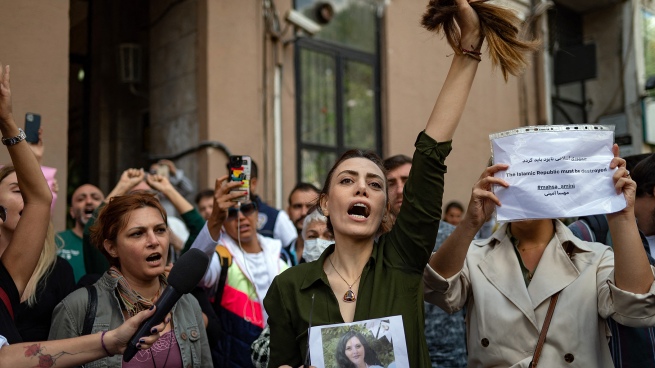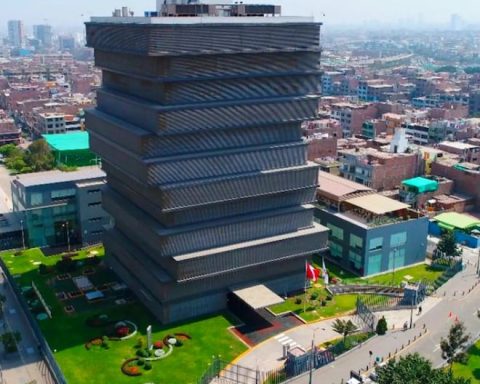Iran experienced a new day of protests this Saturday marked by street clashes and striking workers, almost four weeks after the death of a young woman in the custody of the morality police unleashed a wave of mobilizations and a bloody repression in the Islamic republic. .
Mahsa Amini, a 22-year-old Iranian Kurdish woman, died on September 16 after being arrested in the capital by this police force for violating the strict dress code that requires women to cover their heads and chests with a veil. .
His death sparked a huge wave of demonstrations across the country, the largest since 2019 against rising gasoline prices, in which dozens of people, mainly protesters but also policemen, were killed and hundreds were arrested.
Although the Iranian authorities affirmed yesterday that Amini’s death was not caused by “blows”, but by the consequences of an illness, his family insists that he was in good health.
Although the Iranian authorities affirmed yesterday that Amini’s death was not caused by “blows” but by the consequences of an illness, his family insists that he was in good health.
The Iranians, including college students, took to the streets again this Saturday, despite the fact that the president, the ultra-conservative Ebrahim Raisi, told students at Al-Zahra University in Tehran, the capital, that they would not serve to the interests of the “enemy”.
There were protests in several capital neighborhoods, as well as in Isfahan, Karaj, Shiraz and Tabriz, among other cities, the AFP news agency reported.
According to the Oslo-based NGO Iran Human Rights, at least 92 protesters have been killed since the crackdown began.
Many users on social networks compared the images with those of Neda Agha Soltan, a young woman who became a symbol of the opposition after being shot dead in the 2009 protests.
In Saqqez, located in the western region of Kurdistan and where Amini was originally from, a group of female students demonstrated by waving their veils above their heads, according to videos recorded on Saturday, the Norway-based human rights NGO Hengaw reported.
The demonstrators chanted “Woman, life, freedom”, the slogan of the protests. In another video widely shared on Twitter, a man appears to have been killed while sitting behind the wheel of his car in Sanandaj, the capital of the Kurdish province, where shots were heard.
According to the province’s police chief, Ali Azadi, he had been assassinated “by anti-revolutionary forces.”
In other widely shared images, angry men appear to be taking revenge on a member of the Basij, an Islamic militia that works under orders from the state, who is severely beaten.
Another shocking video shows a young woman allegedly shot to death in Mashhad, in the northeast of the country.

Many users on social networks compared the images to those of Neda Agha Soltan, a young woman who became a symbol of the opposition after being shot dead in the 2009 protests.
While authorities have imposed restrictions on internet access to prevent gatherings and the dissemination of images of the crackdown, protesters have adopted new techniques to get their messages across. “We are no longer afraid. We will fight,” read a large banner posted on an overpass of the Modares highway, which runs through the center of Tehran, according to images verified by the AFP news agency.
According to the NGO Hengaw, “mass strikes” also took place in Saqqez, Sanandaj and Divandarreh, in Kurdistan; and in Mahabad, in the west of the country.

Iran repeatedly accuses foreign forces of fueling the protests, particularly the United States.
Raisi, who in July called for the mobilization of all state institutions to enforce the rules on the Islamic headscarf, called for unity.
“Despite all the efforts of those who wish us harm, the strong and hard-working people of Islamic Iran will overcome the coming problems with unity and cohesion,” he said on Saturday, according to the presidential website.
Last week, the government announced the arrest of nine foreigners, some of them from France, Germany, Italy, Poland and the Netherlands.
Consequently, France yesterday recommended its citizens visiting Iran to leave the country “as quickly as possible” due to the risk of arbitrary detention. So did the Netherlands, which advised its citizens not to travel to the Islamic Republic. “The police sometimes act harshly… The Iranian authorities can also arbitrarily detain people with foreign nationality,” the Dutch authorities noted.


















